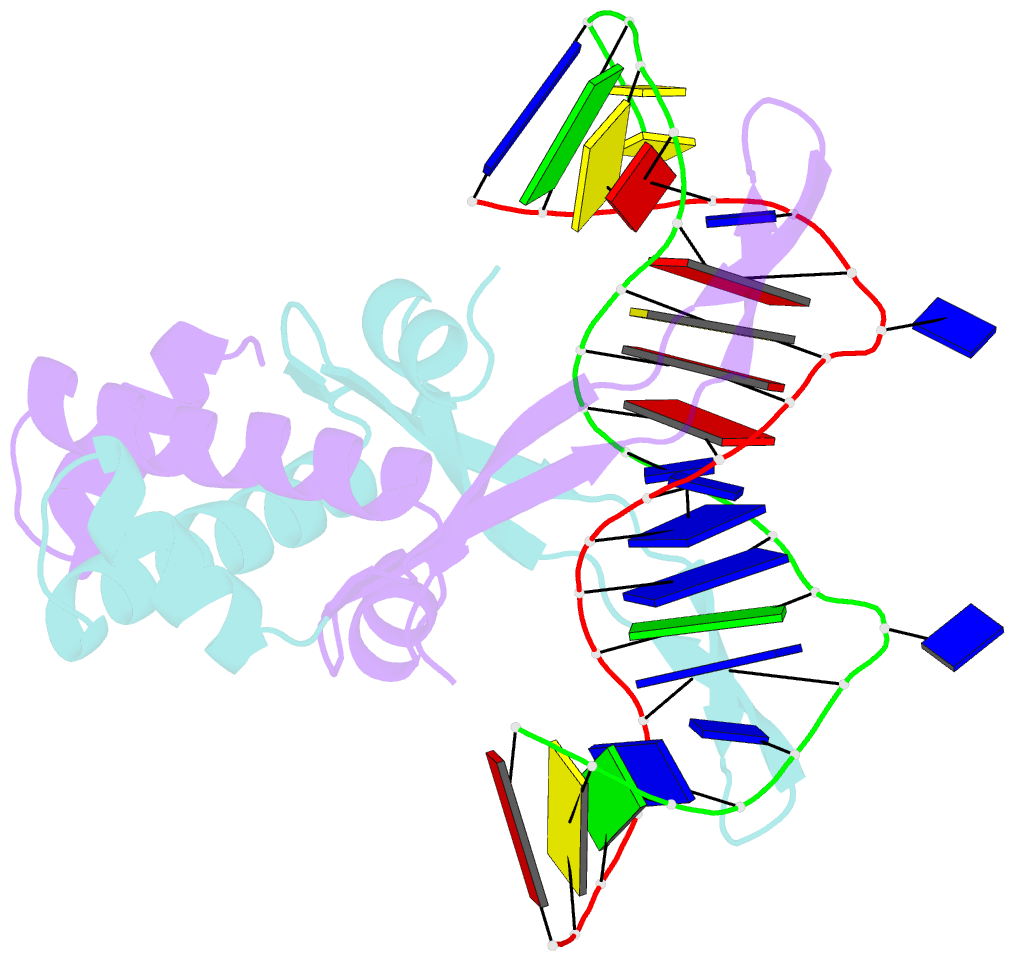Summary information and primary citation
- PDB-id
- 1p78; SNAP-derived features in text and JSON formats;
DNAproDB
- Class
- DNA binding protein-DNA
- Method
- X-ray (2.25 Å)
- Summary
- Anabaena hu-DNA cocrystal structure (ahu2)
- Reference
- Swinger KS, Lemberg KM, Zhang Y, Rice PA (2003): "Flexible DNA bending in HU-DNA cocrystal structures." Embo J., 22, 3749-3760. doi: 10.1093/emboj/cdg351.
- Abstract
- HU and IHF are members of a family of prokaryotic proteins that interact with the DNA minor groove in a sequence-specific (IHF) or non-specific (HU) manner to induce and/or stabilize DNA bending. HU plays architectural roles in replication initiation, transcription regulation and site-specific recombination, and is associated with bacterial nucleoids. Cocrystal structures of Anabaena HU bound to DNA (1P71, 1P78, 1P51) reveal that while underlying proline intercalation and asymmetric charge neutralization mechanisms of DNA bending are similar for IHF and HU, HU stabilizes different DNA bend angles ( approximately 105-140 degrees ). The two bend angles within a single HU complex are not coplanar, and the resulting dihedral angle is consistent with negative supercoiling. Comparison of HU-DNA and IHF-DNA structures suggests that sharper bending is correlated with longer DNA binding sites and smaller dihedral angles. An HU-induced bend may be better modeled as a hinge, not a rigid bend. The ability to induce or stabilize varying bend angles is consistent with HU's role as an architectural cofactor in many different systems that may require differing geometries.





